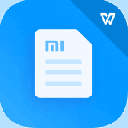





Electrical Instrumentation

Electrical Instrumentation介绍
It is swipe based design for electrical student to learn Electrical Instrumentation. it almost cover topic chapter wise which are given below
Chapter 1 Measurement
1. Measurement and error
2. Accuracy and Precision
3. sensitivity resolution
4. Error & Error analysis
5. Effect of temperature
6. Stray field
7. Hysterisis and Frequency variation & method of minimizing them
8. due to shunt connected and series connect ed instruments
9. calibration curve
10. Testing & calibration of instruments
11. Theory & operation of ballistic galvanometer
12. D'arsonal galvanometer
13. galvanometer motion & damping
14. Definition of analog & digital instruments
15. Classification of analog instruments, their operating principle
Chapter 2 Different types of Ammeter & Voltmeter
1. Permanent Magnet Moving Coil Instrument
2. Electrodynamometer
3. Hotwire
4. Electrostatic
5. Induction
6. Rectifier
7. Ferro dynamic & Electro-thermic
8. Extension of range of instruments using shunt & multiplier
Chapter 3 Instrument transformers and Measurement of power
1. Potential and current transformers
2. ratio and phase angle errors
3. Difference between CT and PT
4. Power in AC and DC Circuit
5. Electrodynamometer type of wattmeter
6. Low power factor & UPF wattmeter
7. Measurement of power in three phase circuit, one, two & three wattmeter method
8. Measurement of power using CTs & PTs
Chapter 4 Measurement of Energy
1. Single phase induction type energy meter
2. Testing by phantom loading and using R.S.S. meter
3. Three phase energy meter
4. Tri-vector meter
5. DC potentiometer standardization
6. application of DC potentiometer
7. AC polar type and coordinate type potentiometer
Chapter 5 Miscellaneous Instruments & Measurements
1. Power factor meter
2. Single phase and three phase Electro-dynamometer type & moving iron type
3. Vibrating reed
4. Resonance type & Weston type
5. Series Type Ohmmeter And Shunt Type Ohmmeter
6. Megger & Ratio meter
7. Classification of low
8. medium & high resistance Voltmeter
9. Ammeter
10. Wheatstone Bridge
11. Kelvin?s double bridge & loss of charge methods for resistance measurement
12. Earth resistance measurement
13. B-H Curve
</div> <div jsname="WJz9Hc" style="display:none">它是基于刷卡设计,电气学生学习电工仪器仪表。它几乎囊括了话题章聪明的将在下面给出
第1章测量
1.测量和错误
2,准确度和精密度
3.灵敏度分辨率
4.错误和误差分析
温度5.影响
6.杂散磁场
7.磁滞及频率变化和减少他们的方法
8.由于分流连接和串联编辑工具
9.校准曲线
10.测试与仪器的校准
11.理论与冲击检流计的操作
12. D'arsonal振
13.振运动及阻尼
模拟和数字仪表14.定义
模拟仪器的15分类,其工作原理
第2章不同类型的电流表和电压表
1.永磁动圈式仪表
2.电力测功机
3.最佳选择,
4.静电
5.感应
6.整流器
7.铁动态及电热
8.延长仪器的使用范围分流和倍增
第3章互感器和功率测量
1.潜在和电流互感器
2.比和相位角误差
CT和PT之间3.差异
在交流和直流电路4.电源
5.电力测功型功率表
6,低功率因数和UPF功率表
7.测量电源的三相电路,一,2路和3瓦特计法
使用的CT和PT的8测量功率
第4章测量能源
1.单相感应式电能表
2.测试假想装载和使用R.S.S.仪表
3.三相电能表
4.三矢量米
5. DC电位标准化
6.应用DC电位
7. AC极型和协调型电位器
第五章其他仪器仪表及测量
1.功率因数表
2.单相和三相电测力计型和动铁式
3.振动片
4.共振型和韦斯顿类型
5.系列欧姆表型和并联型欧姆表
6.兆欧表及比例计
低7.分类
8.介质耐高电压表
9.电流表
10.惠斯通电桥
11.凯尔文?的双桥和充电方法测量电阻损失
12.接地电阻测量
13. B-H曲线</div> <div class="show-more-end">

























